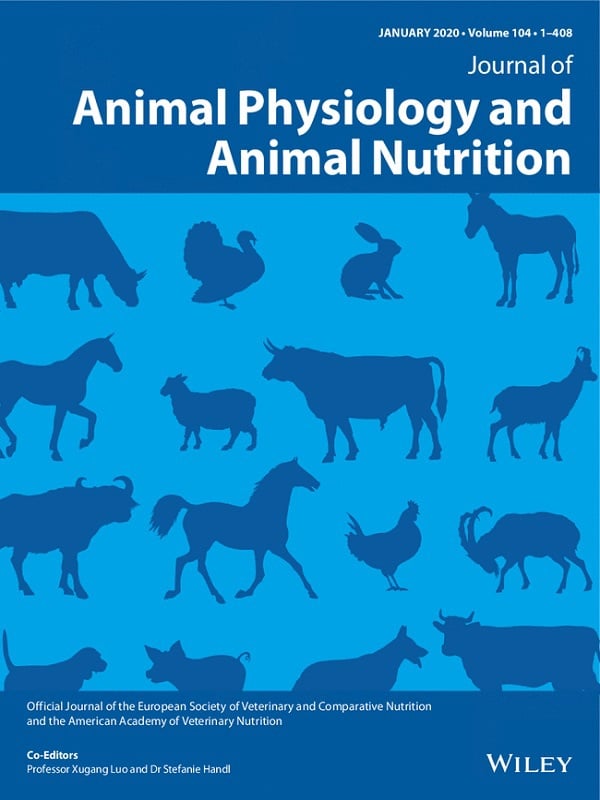Tonicity of oral rehydration solutions affects water, mineral and acid–base balance in calves with naturally occurring diarrhoea
J Anim Physiol Anim Nutr. 2020;104:1655–1670

Abstract
Recommendations for composition of oral rehydration solutions (ORS) for calves, particularly concerning Na+, glucose, and their combined effect on tonicity, are not in line with guidelines for humans. Thus, this study aimed to determine the effect of ORS tonicity on water, mineral and acid–base balance. Seventy‐two calves were selected based on the severity of dehydration and blood base excess (BE) on day 0. Five calves that did not develop diarrhoea were removed post‐inclusion from the study. Calves were allocated to blocks of four animals based on blood BE on day 1. Within each block, calves were randomly assigned to one of four treatments: (a) hypotonic ORS with low Na+ and lactose (HYPO); (b) isotonic ORS with low Na+and glucose (ISO); (c) hypertonic ORS with high Na+ and glucose (HYPER); and (d) control consisting of warm water including 5 g/L of whey powder (CON). Treatments were administered twice daily over a 3‐day period, in which calves were offered 2.0 L of treatment at 1300 and 2100 hr. Calves were fed 2.5 L of milk replacer at 0700 and 1630 hr from day 1 to 3 and 3.0 L from day 4 to 5, and had access to water. Calves were monitored for 5 days in which measurements included intakes, BW, blood sampling and collection of faeces on day 1 and urine from day 1 to 3. All ORS treatments maintained normal serum Na+, whereas CON did not. Calves in the HYPER group had lower blood pH and greater faecal Na+ losses than HYPO and ISO. Plasma expansion relative to baseline was higher in low tonicity ORS (+4.8%) when compared with CON (+1.0%). Urine osmolality was 30% higher in HYPER calves. In this experiment, low tonicity ORS were more effective at restoring water, mineral and acid–base balance than the hypertonic ORS.